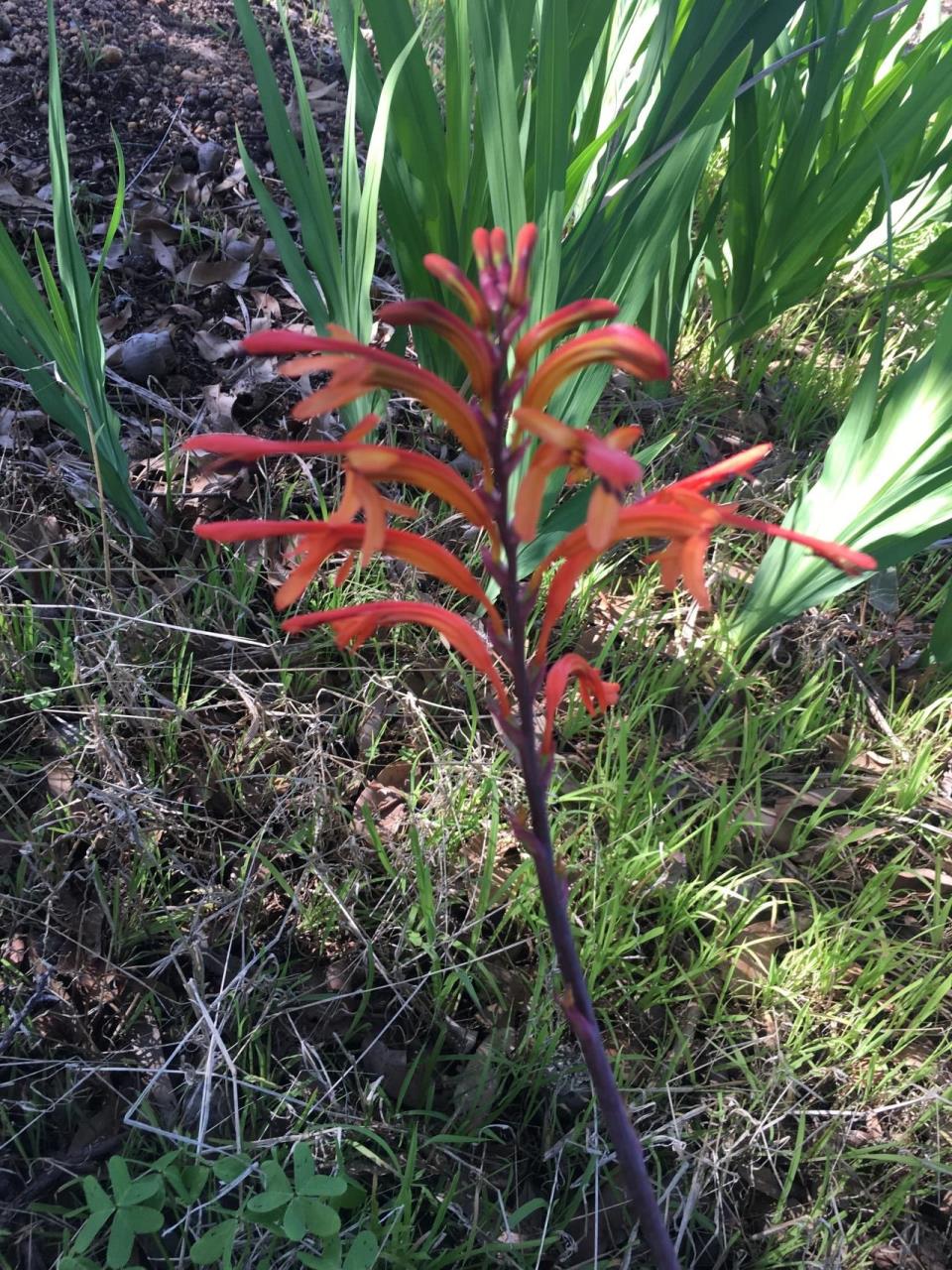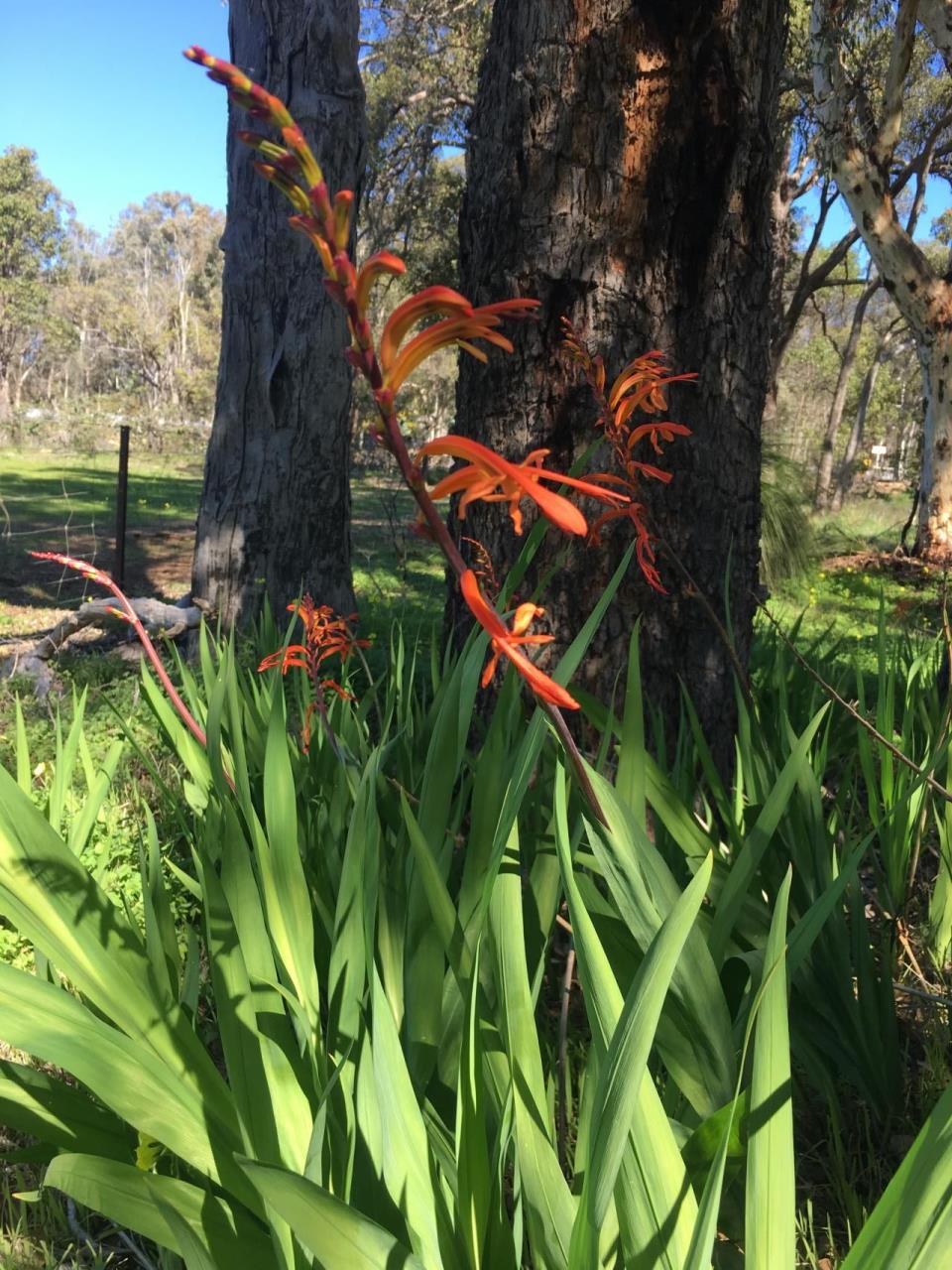Plants that are prevented entry into the State or have control or keeping requirements within the State are known as declared pests.
Narrow leaf cotton bush (Gomphocarpus fruticosus)
What does it look like?
An erect slender short-lived shrub one to two metres high, with narrow opposite leaves, and bladder-like fruit. All parts of the plant exude a milky white sap when damaged. It reproduces by seed and suckers.
Stems
Pale green, 60-180 centimetres high, covered with short whitish downy hairs when young.
Leaves
Dull green, occasionally with shiny upper surface. They are 5-12 centimetres long, 6-18 millimetres wide tapering to a point and are opposite each other in pairs.
Flowers
White or creamy with five fringed waxy lobes turned sharply outwards. They are formed in a loose drooping cluster of three to ten flowers in the leaf axils.
Fruit
Distinctive seed pods that are puffy, swan-shaped structures up to six centimetres long and 2.5 centimetres wide and covered in soft spines up to one centimetres long.
Seeds
Contained within a thin walled sack that is separated from the outer wall by an air space. Brown coloured, flattened and egg shaped about six millimetres long and three millimetres wide with a tuft of silky hairs about three centimetres long at one end
Why is it a problem?
Narrow-leaf cotton bush is a common weed in the south-west of Western Australia. It invades run down or low fertility pastures where it displaces useful species such as clover. Narrow-leaf cotton bush and its close relatives contain cardiac glycosides, which are toxic to humans and livestock. Stock wouldn’t normally eat the plant because its acrid latex makes it extremely unpalatable but it may cause problems as a contaminant of hay or chaff. The main symptom of narrow-leaf cotton bush poisoning is severe gastroenteritis, which shows up as severe congestion of the alimentary canal. Narrow-leaf cotton bush also invades riparian areas where it competes with native plants.
How do we control it?
Control methods for this declared plant can be found through the narrow leaf cotton bush control and the narrow leaf cotton bush: what you should know pages on the Department of Primary Industries and Regional Development; Agriculture and Food website.
Disposal in the general waste bin and not in green waste bin is recommended.
Photo Examples
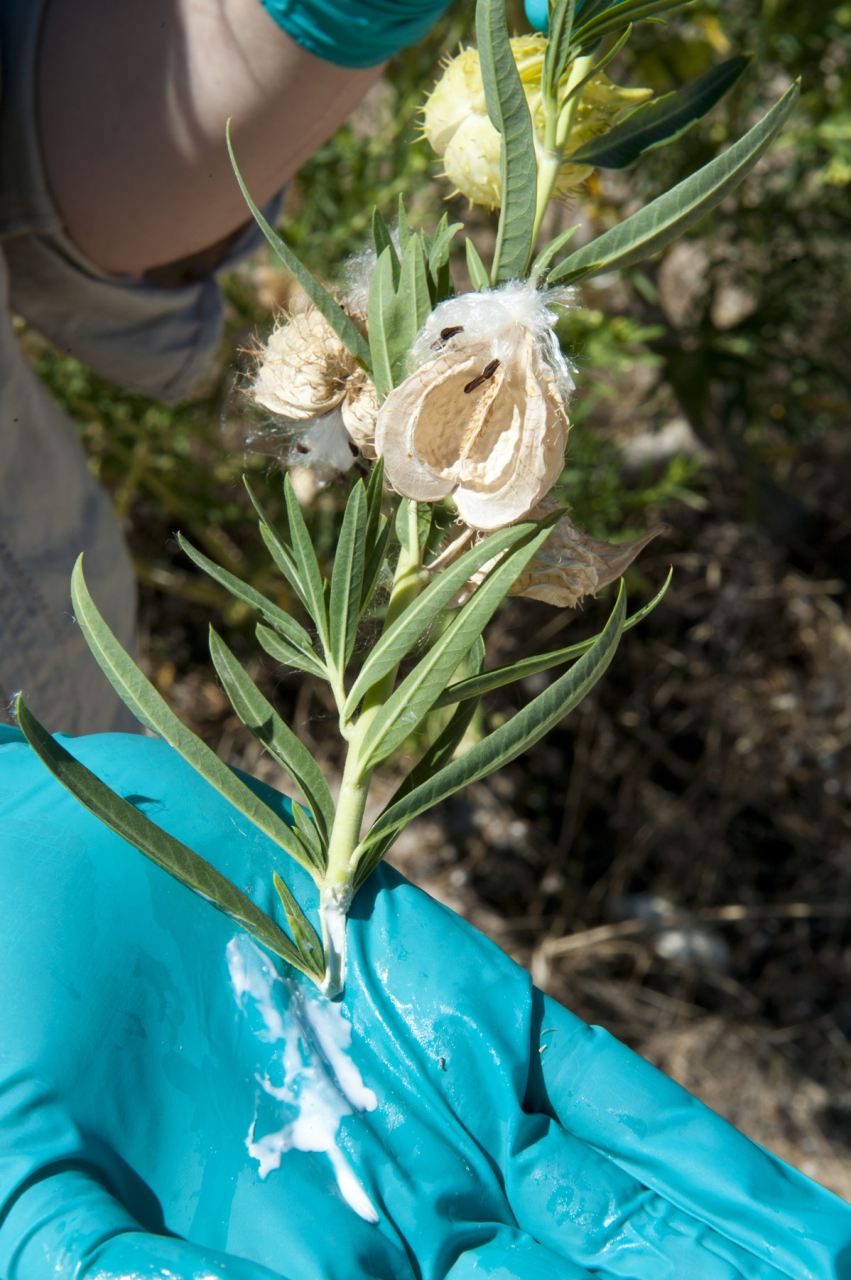
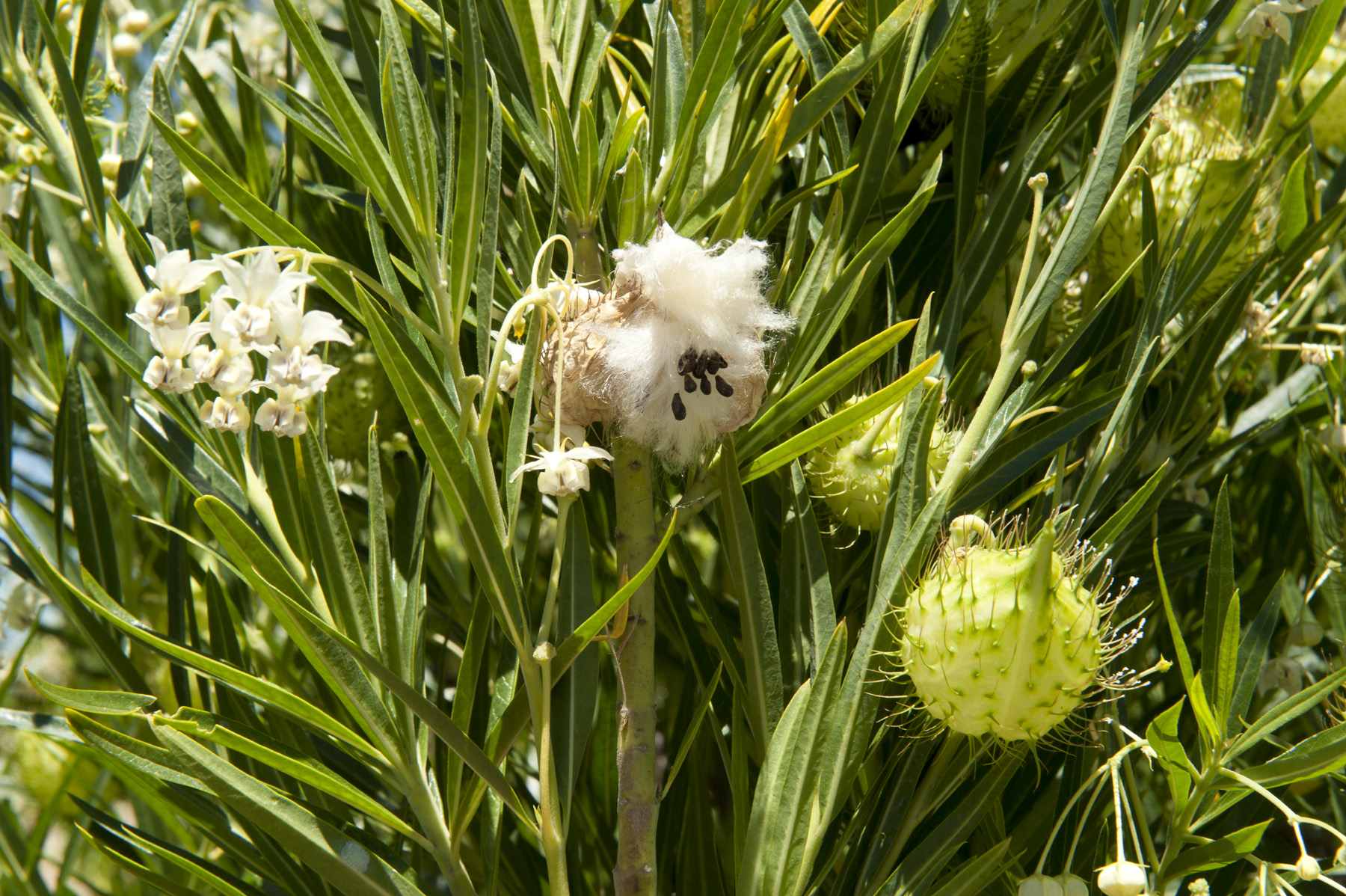
Paterson’s curse (Echium plantagineum)
Paterson’s curse is an annual plant native to the Mediterranean region. It is a classic ‘garden thug’ having been introduced via mail order gardening catalogues in the 1840s, then rapidly invading agricultural land.
What does it look like?
An erect annual (occasionally biennial) herb to 1.5 metres high, commonly 30-60 centimetres, reproducing by seed.
Stems
One to several stems arise from base, much branched and covered with stiff white hairs.
Leaves
Alternate, bristly. Rosette leaves to 25 centimetres long, oval to oblong, stalked and with distinct lateral veins. Stem leaves are smaller and narrower, not stalked and almost clasping the stem.
Flowers
Purple, rarely pink or white, crowded along one side of a curved spike. Five petals joined in a curved trumpet shape, two to three centimetres long. Five stamens, two of which are longer than the others and extend beyond the petals.
Fruit
A group of four nutlets surrounded by a stiffly bristled calyx.
Seeds
Brown to grey, two to three millimetres long, three sided strongly wrinkled and pitted.
Why is it a problem?
Paterson’s curse now covers millions of hectares of land in southern Australia (from WA to northern New South Wales) and is estimated to cost Australian sheep and cattle producers $250 million annually through lost productivity in pastures, control costs, and wool contamination.
It is highly competitive in pastures, replacing desirable plants without contributing to forage value. Paterson’s curse contains pyrrolizidine alkaloids, which are toxic to livestock, particularly horses, though sheep can graze it for a time. Prolonged grazing of Paterson’s curse is harmful, even to sheep, because the alkaloids eventually cause liver damage, especially if stock consume large amounts of this weed in winter and spring and then graze on common heliotrope over summer.
How do we control it?
Biological control
Biological control aims to limit the dominance of Paterson's curse to make it economically insignificant to farmers. Biological control is not an eradication program. It can take many years for the insects to reach their full potential and spread. Biological control requires more than one agent. For Paterson' curse there is a suite of four insects that have been released. Each insect attacks a different life stage of the plant. In some areas, these insects have caused a significant reduction in Paterson seed production.
Biosecurity
Practice good biosecurity. Take particular care when buying seed and feed. Cheap hay is not a bargain if it’s full of weed seeds. It is an offence under the Biosecurity and Agriculture Management Act 2007 to sell or transport hay or other materials containing declared plants – offences can be reported to the Pest and Disease Information Service. Gardeners should take care when purchasing animal manure or loamy soil that it doesn’t contain Paterson’s curse or other weed seeds.
Photo Examples
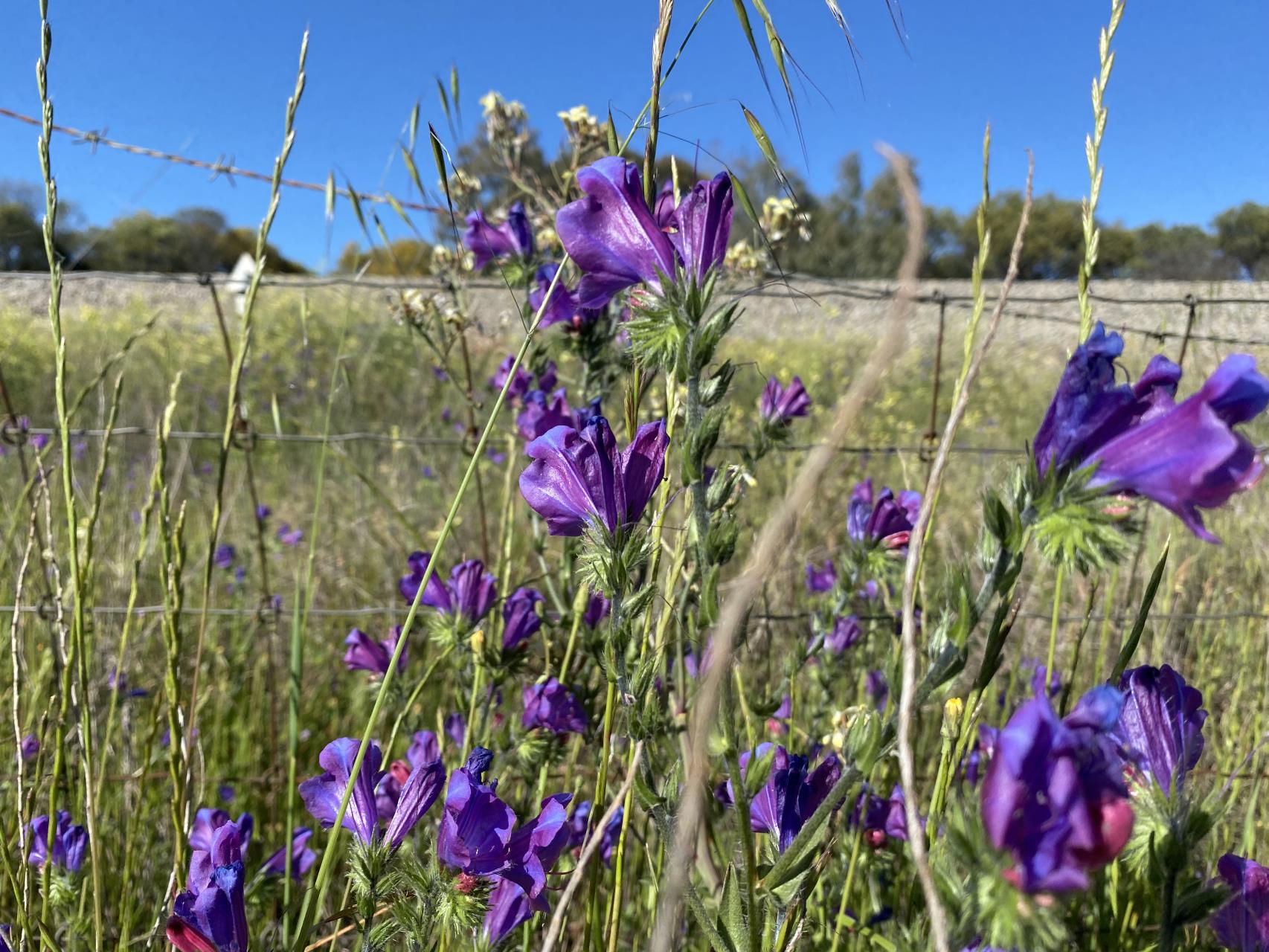
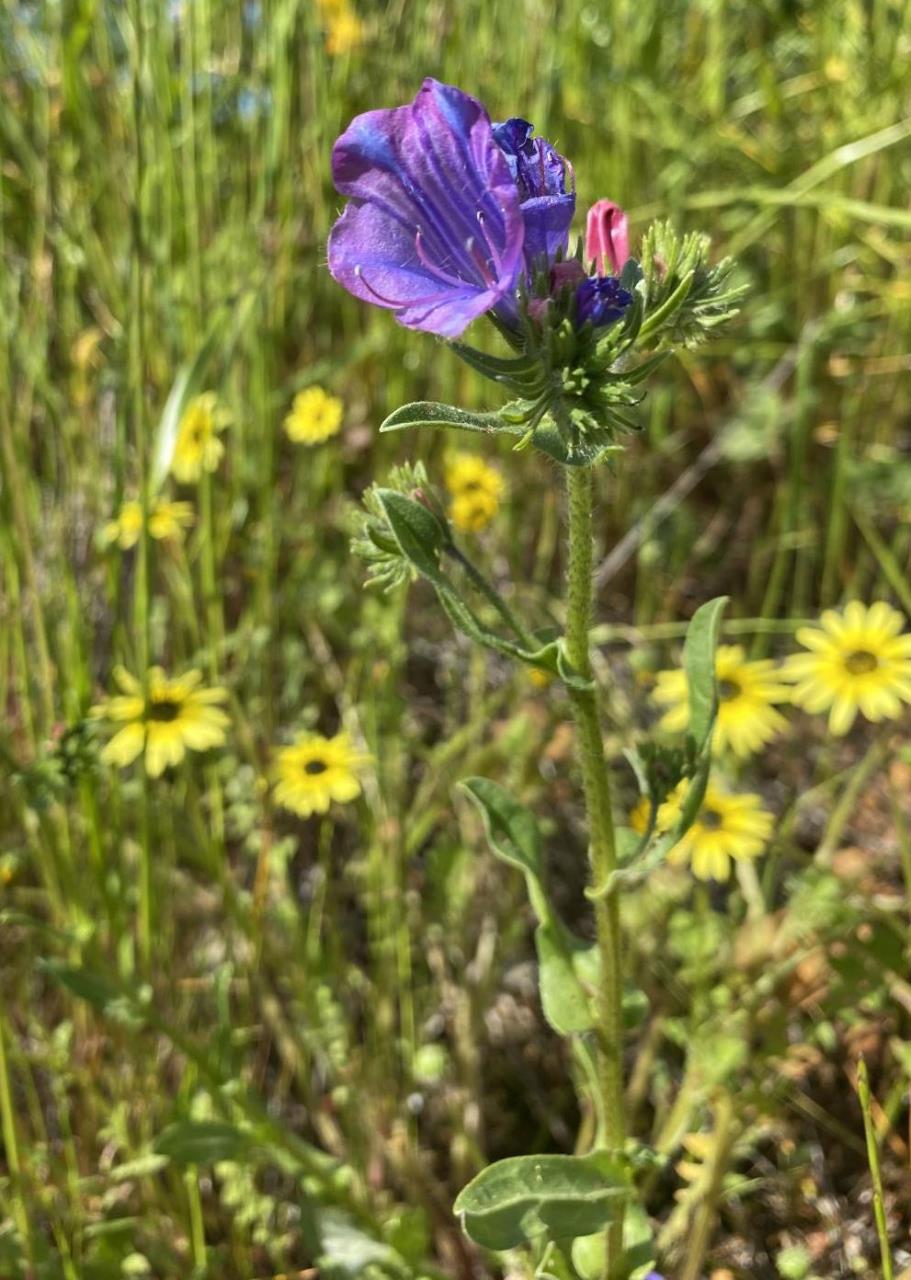
Cape tulip (Moraea flaccida, formerly known as Homeria flaccida & M. miniata, formerly known as H. miniate)
One-leaf Cape tulip (Moraea flaccida, previously Homeria flaccida)
Perennial herb to 70 centimetres high, distinguished by fibrous-sheathed corm at the base of the plant, orange to salmon pink flowers that are yellow in the centre; single leaves and presence of seeds in capsules. Corms one to four centimetres wide, developing new corms each year. Spread by seed and movement of corms. Often found in hay cut from infested paddocks.
Leaves
Leaf folded, ribbed, linear, to one metre long, extended and drooping above the flowers.
Flowers
Borne on branched stems, orange to salmon-pink, occasionally yellow. Flowers with six petals, each 2.6–4 centimetres long, not joined to each other. Flowers in spring when two or three years old.
Seeds
Angular red brown seeds, about two millimetres long, in narrow-cylindrical capsules 2.5–5 centimetres long, splitting from the apex into three parts.
Seeds germinate in autumn and plants regrow from corms at the same time. Poisonous to stock but generally avoided by them. Young stock may be affected if there is no alternative grazing available. One-leaf cape tulip is a serious pasture weed in Western Australia, South Australia and Victoria.
Two-leaf Cape tulip (Moraea miniata previously Homeria miniata)
Two-leaf Cape tulip is a perennial herb to 60 centimetres high.
Leaves
Two or three leaves, folded, ribbed, linear, to 80 centimetres long.
Flowers
Pink–salmon coloured flowers with a green dotted yellow centre on branched stems. Flowers with six petals, segments 1.3–2.5 centimetres long, not joined together. Flowers late winter and spring when two or three years old. Does not produce seeds, but does form a capsule to 1.5 centimetres long, which splits from the tips into three parts.
Corms
corms are 1–2.5 centimetres wide, developing new corms each year. Plants produce clusters of cormils in the swollen leaf axils and many small corms (cormils) around the parent corm. Grows from corms and cormils in autumn. The corm and cormils have a hard black covering (tunic).
Spread by movement of corms and cormils caught in farm machinery and in agricultural produce. Poisonous to stock, but generally avoided by them. Cormil production may exceed many thousands per square metre, and may remain viable in the soil for many years. Less common than one-leaf cape tulip; the two species may grow together.
Why is it a problem?
Both one-leaf and two-leaf Cape tulips are serious weeds of pasture. Animals will selectively graze clovers and other more palatable species, and this allows Cape tulips to flourish. They contain toxic chemicals called glycosides which affect the heart.
Symptoms of poisoning in cattle include loss of appetite, abdominal pain, stiffness of the hind legs, diarrhoea, general depression, and weakness that may advance to convulsions or paralysis. Death may occur within hours of consuming the plant, or over several days. At post-mortem examination there is usually evidence of gastro-enteritis, with reddening of the abomasum (true stomach), and longitudinal red striping of the caecum and terminal large bowel. The heart may show haemorrhages on the inside and outside surfaces.
Cattle are most commonly affected, and poisoning usually occurs when stock unaccustomed to the plant are placed on heavily infested pastures. About a kilogram of fresh leaf material is enough to cause death overnight.
Sheep are rarely affected, although they are susceptible to the toxins. Placing very hungry sheep on infested green or dry pasture may result in poisoning.
The plant remains toxic even when dry, so contaminated hay can also be a problem. There is no treatment readily available. Prevent poisoning by avoiding contact with the plants. Always seek veterinary advice when livestock show unusual symptoms and/or unexplained deaths occur.
Cape tulip can be difficult and expensive to eradicate. Some herbicides effective in controlling Cape tulip also damage pasture legumes. Research is continuing into economically viable means of control, including biological control.
How do we control it?
The dormancy associated with both Cape tulip species can lead to disappointment with control efforts. If a good kill is achieved in a year when many plants are dormant, there may be many more plants present the following season. Ask your agribusiness consultant, local Biosecurity Officer or landcare coordinator for assistance in preparing a weed management plan.
Practise good biosecurity to avoid introducing Cape tulip to your property and to avoid poisoning livestock.
Further information on updated control methods can be found here: https://www.agric.wa.gov.au/declared-plants/cape-tulip-what-you-should-know
Photo Examples
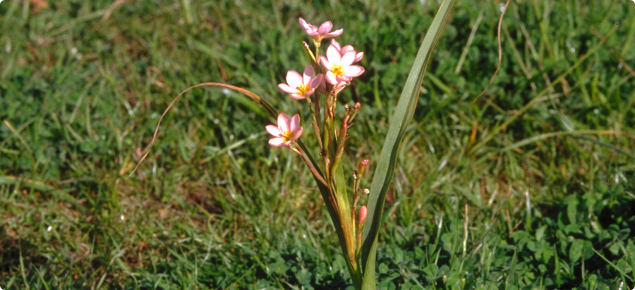
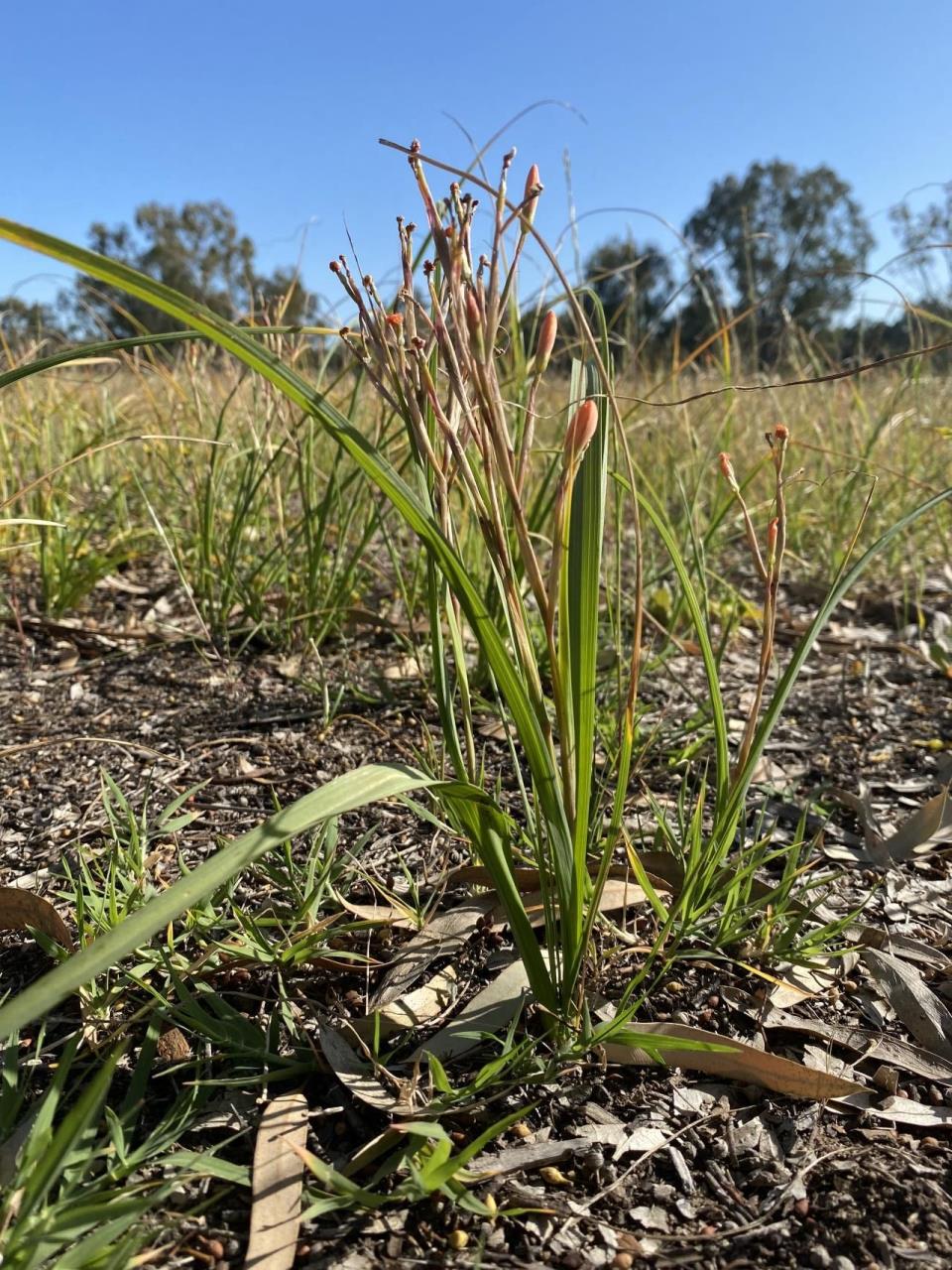
Bridal Creeper (Asparagus asparagoides)
What does it look like?
Stems
Bridal creeper is a climbing herb or vine to three metres, arising from a short rhizome attached to tuberous roots.
Leaves
The adult foliage of bridal creeper is not that of true leaves but flattened leaf-like appendages called cladodes or phylloclades that arise from the base of the true leaves, which are reduced to scales. The cladodes are stalkless, dull to glossy green, ovate to broadly lanceolate (shaped like the head of a lance), 10 to 70 millimetres long, 4 to 30 millimetres wide and have delicate parallel venation with no apparent midrib.
Flowers
It has creamy white flowers with six petals, which are borne on stems in ones and twos along the climbing stems or branches.
Fruit
Bright red fleshy berries.
Seed
Each berry with one to four shiny black seeds, but occasionally with more.
Why is it a problem?
It became common as a weed along roadsides, in town allotments, orchards and citrus groves, waste places and disturbed scrubland close to habitation.
Bridal creeper invades dry coastal vegetation, heath land and healthy woodland, mallee shrubland, lowland grassland and grassy woodland, dry sclerophyll forest and woodland, damp sclerophyll forest, riparian vegetation, rock outcrop vegetation, and warm temperate rainforest. It can invade undisturbed bushland as its seeds are spread by birds. Bridal creeper is frost tolerant and its perennial root system enables it to survive summer drought. Biological control agents have been released for bridal creeper.
How do we control it?
Chemical control information can be found here: https://www.agric.wa.gov.au/herbicides/bridal-creeper-control
Disposal in the general waste bin and not in green waste bin is recommended.
Photo Examples
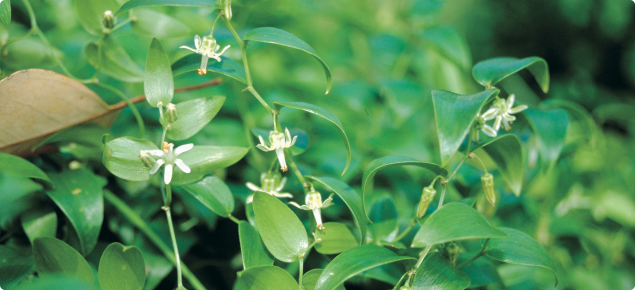
WATSONIA (WATSONIA MERIANA VAR. BULBILLIFERA)
What does it look like?
Flowers
The flowers spikes bear two rows of curved, tubular flowers (10-15 on each spike) that are orange, red, pink and purple in colour, and have six partially fused ‘petals’ 5 to 8 cm long. Flowers appear in spring and early summer.
Stems
The flowering stems up to 2 m tall appear in spring and are rounded, up to 20 mm thick and are often reddish in colour Stems arise from the base of the plant along with the majority of the leaves.
Leaves
Watsonia produces dense stands of light green, sword-shaped leaves from the base. The rigid leaves have a prominent mid-vein and are less than 110cm long and 1 to 5 cm wide. They are produced from a central corm in winter and die off in late summer – autumn, or earlier in dry years.
Why is it a problem?
Bulbil watsonia is an aggressive weed of native vegetation. It can form dense stands that exclude other ground-layer species in more open bush, wetlands and along creek lines. It also invades roadsides, wasteland and unimproved pasture, especially in winter waterlogged areas. It is regarded as visual pollution on roadsides because of its size and non-native appearance. It is suspected to be poisonous to stock, with stock generally avoiding mature plants, although they appear to be unaffected by young shoots.
How do we control it?
Contaminated soil and plant material should be disposed of safely to avoid creating new infestations. Cormils and corms must be burnt or buried to a depth greater than 20cm, as they will re shoot if left on the soil surface.
Remove by hand
For small infestations, individual plants can be dug out by hand or by loosening the soil with a fork and pulling the top growth.
Disposal in the general waste bin and not in green waste bin is recommended.
Cultivation
Cultivation to 10 cm provides good control if done after the old corm is exhausted and before the new corms form or before the flower stem emerges.
Grazing
Stock will graze on young shoots and can provide effective control in pastures.
Herbicide
Small infestations in native vegetation can be controlled by spot spraying or wiping foliage with herbicide, although this can be labour intensive.
Photo Examples
